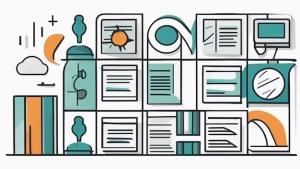Demystifying the Tech: A Beginner’s Guide to Choosing and Implementing Small Business Budgeting Software

Managing finances can feel confusing and stressful. Small business owners often struggle to track income and expenses. Technology can help simplify these tasks. Small business budgeting software offers tools to organize spending and plan growth. Sometimes the thought of using new software feels overwhelming. This guide will break down the steps to select and implement these tools in simple ways. You do not need advanced skills to start using it. Understanding the basics can save time and prevent mistakes. By taking small steps, technology becomes approachable and practical.
Understanding Your Needs
The first step is knowing what you need. Every business has unique financial requirements. Sometimes owners focus only on revenue and forget expenses. Start by listing your monthly costs and income sources. Then think about features that help track these numbers. The small business budgeting software often has reporting tools that simplify analysis. You can also include plans for special investments. For storage or equipment you may need budget consideration. By understanding your needs clearly, choosing software becomes easier and more focused.
Evaluating Software Options
Next, explore the software options available. Many programs offer free trials for beginners. Therefore you can test without commitment. Look for software with simple navigation and clear instructions. Sometimes flashy features confuse rather than help. Check if the software fits your device and business size. Online reviews and user experiences can guide your choice. You want a tool that grows with your business. Software should provide support and clear tutorials. This ensures you feel confident using it every day.
Implementing the Software
Implementation should start slowly and carefully. Sometimes owners try to enter everything at once. Begin with basic income and expense tracking. Then add categories for taxes and savings. You can also include future investments. Familiarize yourself with dashboards and reports. Take small steps to avoid frustration or errors. Sometimes setting reminders helps maintain consistent updates. Over time, the software will provide accurate insights. Regular use becomes a habit that improves financial control.
Maximizing the Benefits
After setup, focus on using the software effectively. Sometimes owners underestimate the power of simple reports. Use them to spot trends and make informed decisions. Regular review can prevent overspending and improve planning. Small business budgeting software helps prioritize investments and savings. Therefore understanding the data leads to smarter choices. Share reports with trusted advisors when needed. This helps avoid surprises and ensures growth. Technology becomes less intimidating with consistent practice.
Conclusion
Choosing and using small business budgeting software does not have to be hard. By understanding needs, evaluating options, and implementing slowly, owners gain confidence. Technology becomes a helpful tool rather than a challenge. Simple consistent use improves financial decisions and planning. Sometimes small steps today lead to larger success tomorrow.





